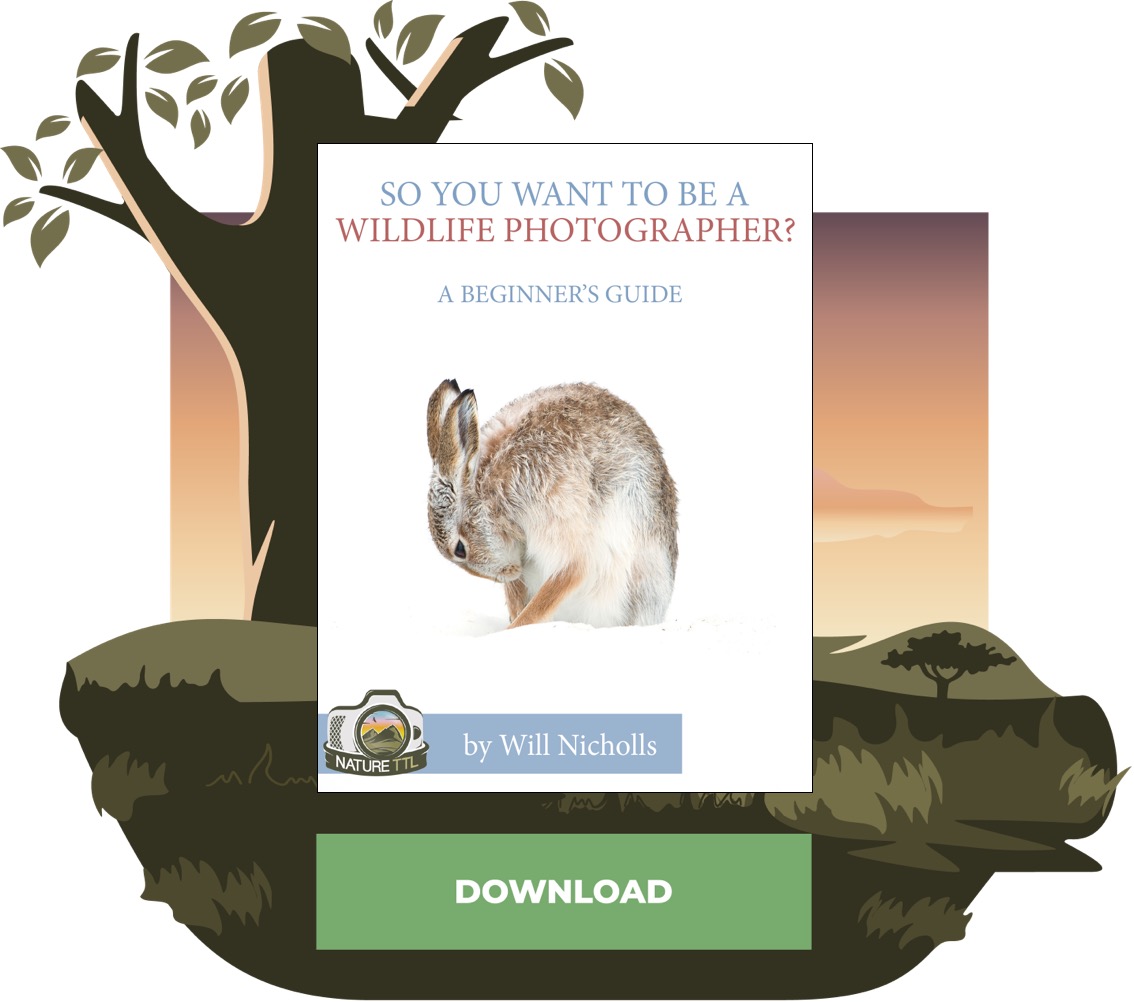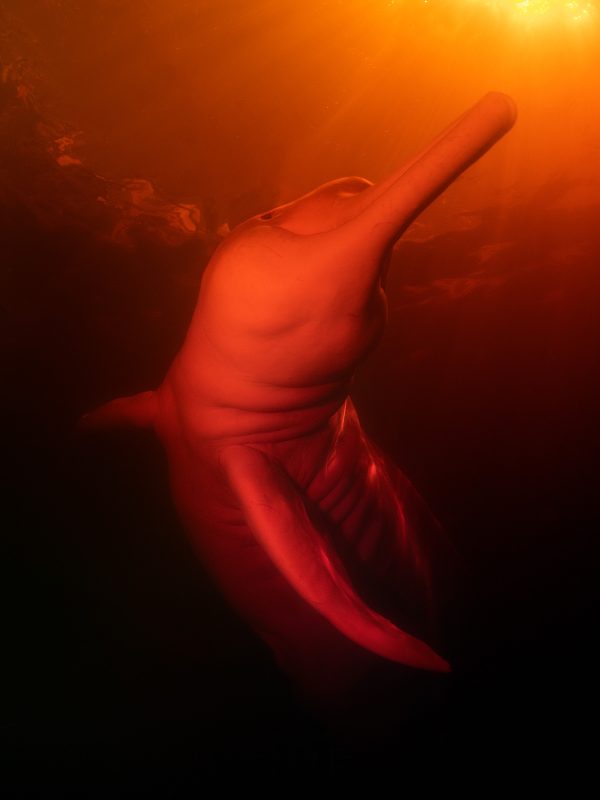The Legendary Amazon River Dolphin Caught on Camera

There’s a legend among locals in the Amazon that pink river dolphins, or “botos”, can transform into handsome men known as “boto encantado” at night to seduce and impregnate women.
Though I did not witness this elusive boto transformation, at dusk I was enchanted by these beautiful dolphins in a very different way!



The Amazon rainforest is one of the most biodiverse ecosystems on the planet, providing a home for over 3 million species. Ever since I started underwater photography in 2019, one of those species has always been on my mind to photograph – the Amazon river dolphin.
Though I love all species of dolphins (in fact, as a child, I would check out every book about dolphins at any library I visited), river dolphins have always intrigued me with their strange physical appearances and unique living environments.
In 2022, I organized a trip to the Amazon to photograph its distinctive pink river dolphin, where I captured my split-shot of a “boto encantado” at sunset.
The Amazon River system
In underwater photography, visibility is of great importance, and unfortunately, river systems in the Amazon are not known for their clarity.
One of the main rivers in the Amazon, known in Brazil as the Rio Solimões, flows from the Andes Mountains. It, therefore, collects a lot of sediment along the way and takes on a brown, muddy appearance with almost zero visibility underwater.

Another major river, called the Rio Negro, is a slow-moving river that flows from interior jungles in the Colombian hills.
As it meanders through decaying vegetation in the jungles, tannins leak into the water, giving it a blackish-reddish colour and an acidic pH in a process that is not dissimilar to steeping black tea.
Though the water is dark, there is no sediment, which means there’s some (minimal) visibility. As a result, though the conditions are not ideal by any standard, the Rio Negro is where I headed to photograph botos underwater.
The water ranges from 4.7-5.2 in pH; though this acidity meant there wasn’t much wildlife around other than the dolphins, it also led to the best part of the trip – there are no mosquitoes in this part of the Amazon!

The difference between these two rivers is visibly illustrated in an area known as the “Meeting of Waters”, where the Rio Negro and Rio Solimões converge but do not mix.
Due to differences in density, temperature, and speed, the rivers run side-by-side for 6 kilometres without mixing.
The Rio Negro, which flows through interior jungles from the Colombian hills, is 28°C and moves at around 2 km/h. While the Rio Solimões, which flows from the Andes Mountains and thus collects a lot of sediment, is around 22 °C and moves at 5km/h.
When they eventually mix downstream, only then do they become known as the Amazon River. Due to all the sediment from the Rio Solimões, the Amazon River takes on its muddy appearance.
Amazon river dolphin adaptations
Every year, spring rains cause rivers in the Amazon to flood, submerging parts of the forest floor and creating a phenomenon known as flooded forests.
This flooding deposits silt from the rivers, providing fertilization to sustain the forest fauna, and it is an integral part of the Amazon ecosystem.

Though they often live in the shadows of the more commonly-admired oceanic dolphins, river dolphins are some of the most well-adapted mammals on the planet.
Unlike oceanic dolphins, river dolphins have unfused neck vertebrae, allowing them to turn their heads 90 degrees to each side.
They also have a greater angle of rotation in their flippers than their ocean brethren, and they possess the ability to make incredibly sharp turns by paddling their flippers in opposite directions.
This flexibility and manoeuvrability allow them to navigate through the tangled branches and vines of the Amazon’s flooded waterways without getting caught.

Instead of a vertically protruding dorsal fin, they have a long ridge running down their backs, which helps them maintain stability while swimming in shallow water.
Observing the difference underwater in how Amazon river dolphins swim and move compared to oceanic dolphins is quite striking!
Lighting and luck
Due to the darkness of the water, proper lighting becomes a huge challenge when photographing in the Rio Negro. Most underwater photographers use strobes on their rigs, which are underwater flashes that provide short bursts of powerful light.
Though various brands and models of strobes provide differing levels of illumination, the most commonly used strobes provide an adequate range of power for average underwater shooting conditions.
In the Rio Negro, however, the light from my strobes did not travel very far through the water, even when I had them set to full power.
As a result, the dolphins had to get extremely close for me to get a decently lit photograph.
Though the dolphins were curious and would approach me, they rarely stayed around for long before disappearing back into the darkness, leaving limited chances to get my strobes properly positioned for each shot.
Furthermore, because I was shooting with my strobes on such high power settings, I burned through batteries quickly.
The first day, I had no power left in my strobes by the time sunset rolled around, and I couldn’t take a single shot. The next day, I was much smarter and remembered to bring backup batteries!
Another challenge with lighting was the recycling time of the strobes. At higher power levels, it takes longer for the flash to draw power into its capacitors.

On my strobes, this refresh rate takes about 1.5 seconds at full power, which leaves a pretty large gap between flashes.
During the day, this wasn’t the end of the world, because I could always wait and try again, or I could take silhouetted photos in between strobe blasts, especially when shooting from below.
During sunset, though, time is of the essence. While I mostly shot fully underwater during the day, I knew that I wanted to try to capture split-shots at sunset to create contrast between the colourful sunset sky and a dolphin in dark water.
When I was trying for sunset split-shots, I would mash down the shutter whenever a dolphin came close to me and hope that one of the photos be both properly lit and with the subject in an aesthetically pleasing pose.
I certainly consider myself lucky to have captured a dolphin giving such a perfect smile!
Amazon river dolphin conservation
There are only six extant species of river dolphins left in the world, and all of them are either endangered or critically endangered.
The Amazon river dolphin population has declined by over 94% since 2000, and the species was marked as “Endangered” in 2018.
Their decline is closely linked to the fishing industry – over the past two decades, many fisheries have sprung up in Brazil to catch piracatinga, a prized species of catfish.
When the fisheries discovered that boto meat (originally only sourced from carcasses found entangled in fishing equipment) was an effective bait for piracatinga, they began purposefully killing botos in large numbers, decimating their population.

The Brazilian government enacted a five-year ban on intentionally killing river dolphins in 2014, but illegal hunting activity continued. The ban was not renewed and was formally lifted in 2020, marking a bleak future for the species.
In addition to heavy pressure from fisheries, Amazon river dolphins are also threatened by mercury poisoning due to local gold mining activity, and by large-scale development projects that threaten the Amazon ecosystem.
Though botos are revered by locals in legends, if current trends continue, I fear that soon they will truly become no more than mythical creatures.
In conclusion
Getting up close with such a unique and rare species I’ve loved since childhood was an experience I’ll never forget.
Despite the initially daunting task of photographing in a blackwater river, I loved the mental challenge of having to completely rethink how to light my images and compose my shots to capture something unique.
In return, I hope to now shed some light (pun intended) to a broader audience on a species that’s not often photographed or talked about.
I’m thankful for this opportunity to spread awareness about the pressures threatening Amazon river dolphins today, and I hope to see a greater push for conservation and ecotourism, to work toward a future where each dolphin is worth more alive than dead.





